Search Result
Results for "
brain penetration
" in MedChemExpress (MCE) Product Catalog:
1
Biochemical Assay Reagents
1
Isotope-Labeled Compounds
| Cat. No. |
Product Name |
Target |
Research Areas |
Chemical Structure |
-
- HY-138879
-
|
|
nAChR
|
Neurological Disease
|
|
CP-601927 is a selective α4β2 nicotinic acetylcholine receptor (nAChR) partial agonist (Ki=1.2 nM; EC50=2.6 μM). CP-601927 shows good brain penetration and antidepressant-like properties .
|
-

-
- HY-P9967
-
|
BIIB037
|
Amyloid-β
|
Neurological Disease
|
|
Aducanumab (BIIB037) is a human monoclonal antibody that selectively targets aggregated amyloid-beta (Aβ). Aducanumab shows brain penetration, and can be used for Alzheimer's disease (AD) research .
|
-

-
- HY-139300A
-
|
HMPL-813 succinate
|
EGFR
|
Cancer
|
|
Epitinib succinate is an orally active and selective epidermal growth factor receptor tyrosine kinase inhibitor (EGFR-TKI) designed for optimal brain penetration. Epitinib succinate can be used for the research of cancer . Epitinib (succinate) is a click chemistry reagent, it contains an Alkyne group and can undergo copper-catalyzed azide-alkyne cycloaddition (CuAAc) with molecules containing Azide groups.
|
-
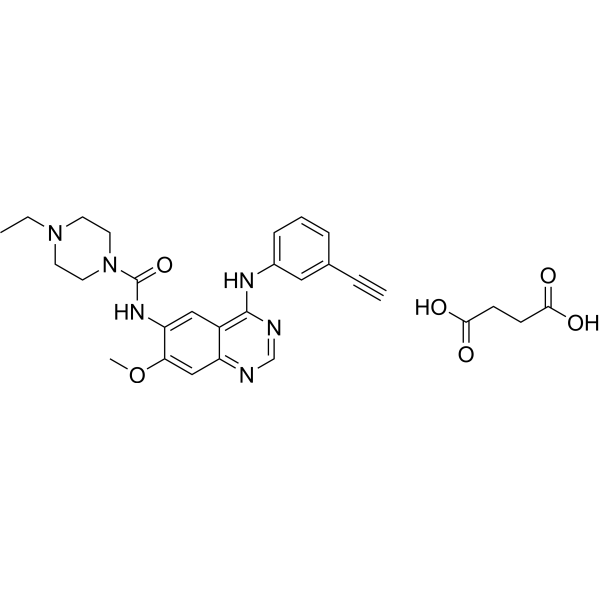
-
- HY-116625
-
|
|
GHSR
|
Neurological Disease
|
|
PF-04628935 (compound 10n) is a potent ghrelin receptor inverse agonist, with an IC50 of 4.6 nM. PF-04628935 exhibits oral bioavailability of 43% in rats and shows reasonable penetration into the brain. PF-04628935 can be used for stress and anxiety research .
|
-
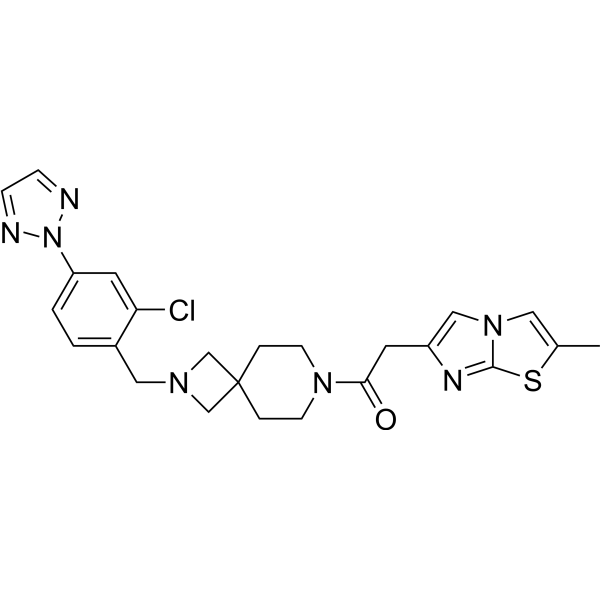
-
- HY-139300
-
|
HMPL-813
|
EGFR
|
Cancer
|
|
Epitinib is an orally active and selective epidermal growth factor receptor tyrosine kinase inhibitor (EGFR-TKI) designed for optimal brain penetration. Epitinib can be used for the research of cancer . Epitinib is a click chemistry reagent, it contains an Alkyne group and can undergo copper-catalyzed azide-alkyne cycloaddition (CuAAc) with molecules containing Azide groups.
|
-

-
- HY-120124
-
|
SUVN-G3031
|
Histamine Receptor
|
Neurological Disease
|
|
Samelisant (SUVN-G3031) is a potent and selective histamine H3 receptor (H3R) inverse agonist with good brain penetration and oral bioavailability. Samelisant has a similar binding affinity towards human (hH3R; Ki=8.7 nM) and rat (rH3R;Ki=9.8 nM) H3R indicating no inter-species differences. Samelisant can be used for the research of sleep-related disorders .
|
-
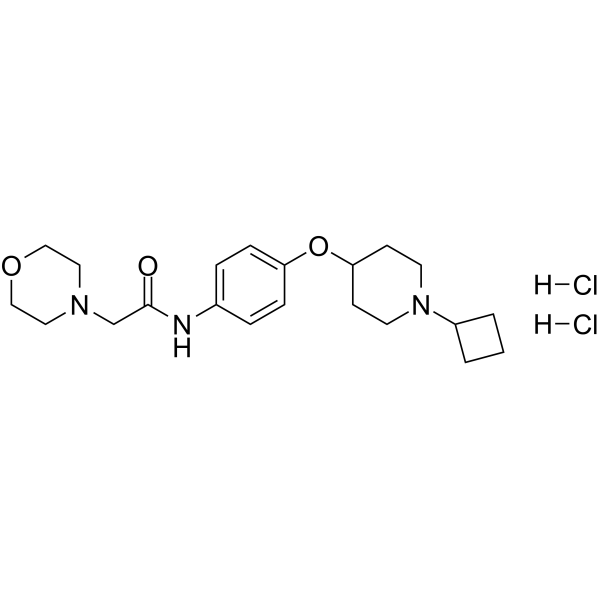
-
- HY-149065
-
|
|
α-synuclein
|
Neurological Disease
|
|
D-685, a prodrug of D-520, exhibits higher in vivo anti-Parkinsonian efficacy in a reserpinized Parkinson's disease (PD) animal model than the parent D-520. D-685 reduces accumulation of human α-synuclein (α-syn) protein. D-685 exhibits facile brain penetration .
|
-

-
- HY-11044
-
|
|
Histamine Receptor
|
Neurological Disease
Inflammation/Immunology
Endocrinology
|
|
PF-03654746 Tosylate is a potent and selective histamine H3 receptor antagonist with high brain penetration. PF-03654746 Tosylate reduces allergen-induced nasal symptoms . PF-03654746 Tosylate has potential for treatment of human cognitive disorders, improves cognitive efficacy and disease-modifying effects in Alzheimer's disease (AD) .
|
-
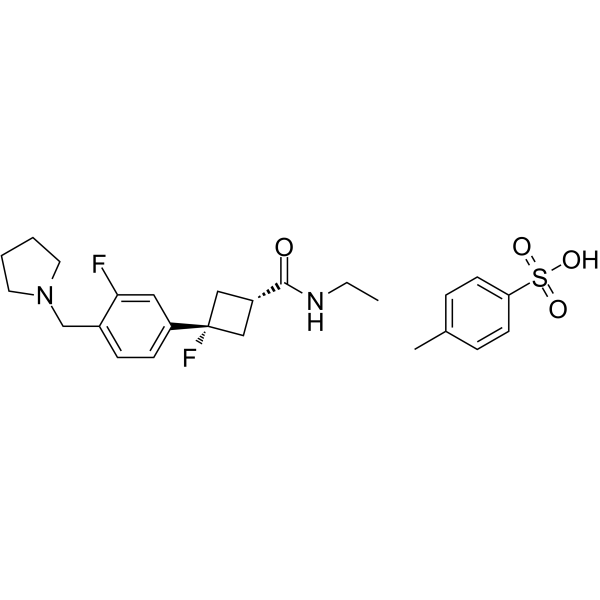
-
- HY-145313
-
|
|
Others
|
Neurological Disease
|
|
TTBK1-IN-2 (compound 29) is a potent Tau-Tubulin kinase (TTBK1) inhibitor with IC50s of 0.24 and 4.22 µM, respectively. TTBK1-IN-2 reveals good brain penetration in vivo and is able to reduce TDP-43 phosphorylation not only in cell cultures but also in the spinal cord of transgenic TDP-43 mice .
|
-
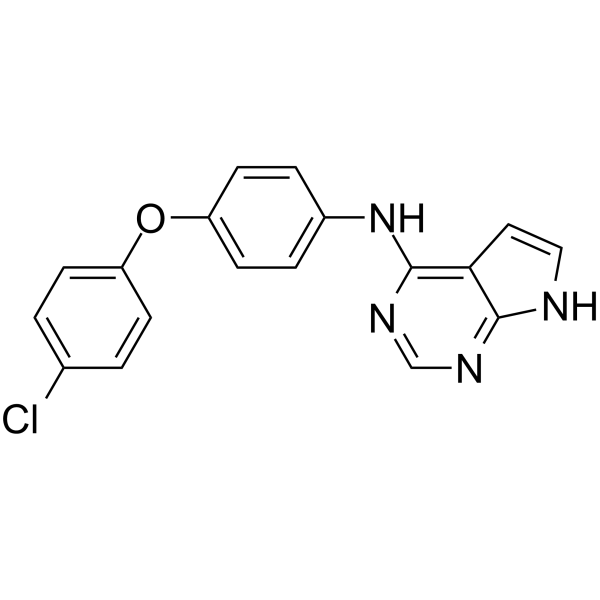
-
- HY-155672
-
|
|
5-HT Receptor
|
Neurological Disease
|
|
JPC0323 is a dual 5-HT2C/5-HT2A receptor positive allosteric modulator. JPC0323 has on-target properties, acceptable plasma exposure and brain penetration. JPC0323 can be used for the research of neurological disease .
|
-
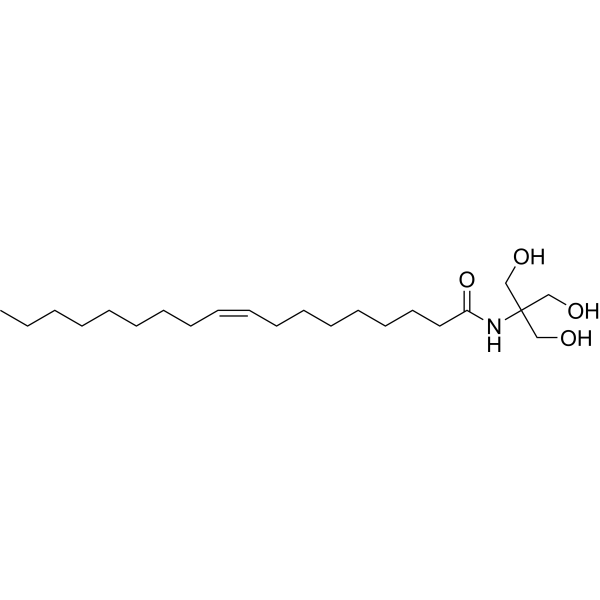
-
- HY-122608
-
|
SUVN-G3031 free base
|
Histamine Receptor
|
Neurological Disease
|
|
Samelisant (SUVN-G3031) free base is a potent and selective histamine H3 receptor (H3R) inverse agonist with good brain penetration and oral bioavailability. Samelisant free base has a similar binding affinity towards human (hH3R; Ki=8.7 nM) and rat (rH3R;Ki=9.8 nM) H3R indicating no inter-species differences. Samelisant free base can be used for the research of sleep-related disorders .
|
-
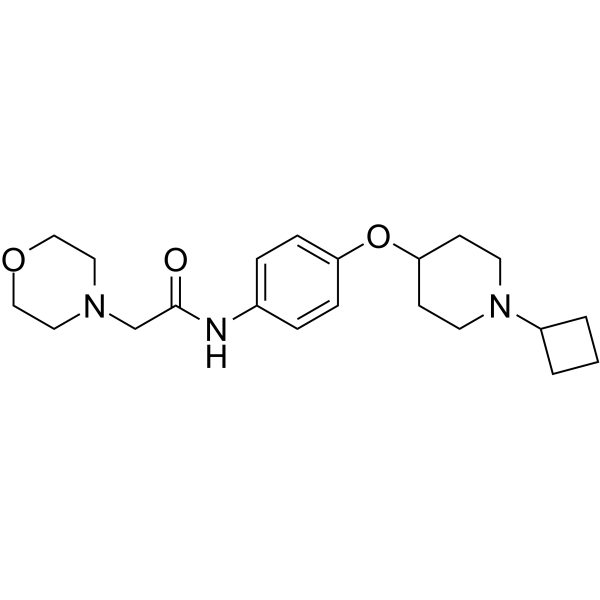
-
- HY-12844
-
|
|
Opioid Receptor
|
Neurological Disease
|
|
Ro 64-6198 is a potent, selective, nonpeptide, high-affinity, high cellular permeability and brain penetration N/OFQ receptor (NOP) agonist with an EC50 value of 25.6 nM. Ro 64-6198 is at least 100 times more selective for the NOP receptor over the classic opioid receptors. Ro 64-6198 can be used for stress and anxiety, addiction, neuropathic pain, cough, and anorexia .
|
-
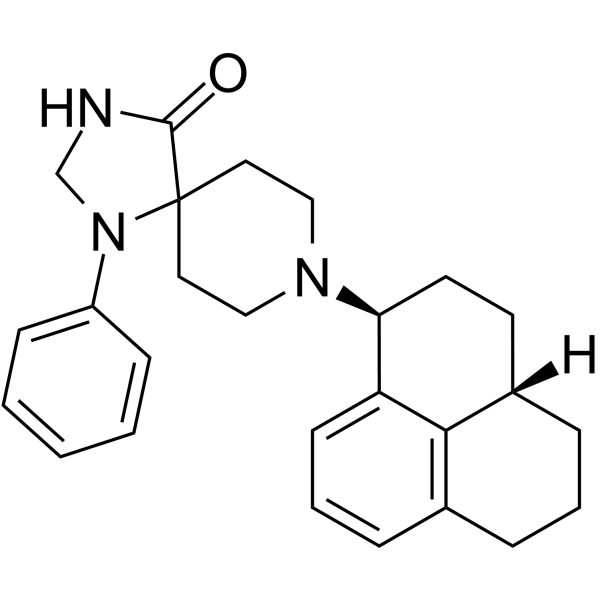
-
- HY-123410
-
|
|
Cannabinoid Receptor
|
Cancer
|
|
KM-233 is a classical cannabinoid with good blood brain barrier penetration. KM-233 possesses a selective affinity for the CB2 receptors relative to THC. KM-233 is effective at reducing U87 glioma tumor burden, and can be used for glioma research .
|
-

-
- HY-148825
-
-
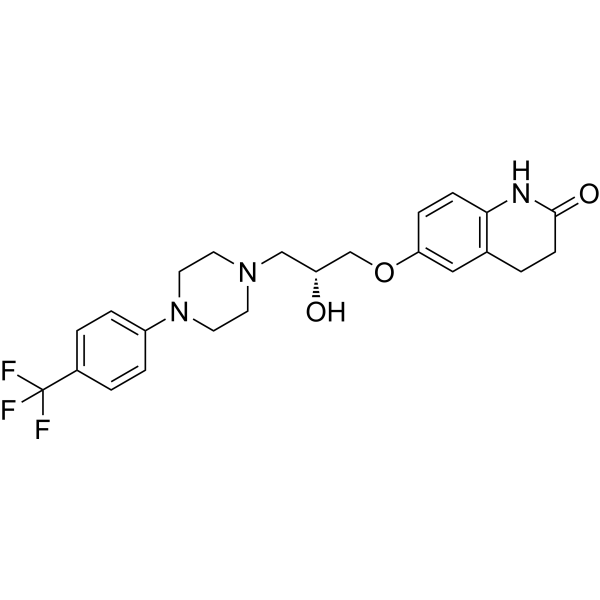
-
- HY-110206
-
|
|
Cannabinoid Receptor
|
Metabolic Disease
|
|
AM6545 is a peripherally active, cannabinoid receptor antagonist with limited brain penetration. AM6545 binds to CB1 and CB2 receptors with Kis of 1.7 nM and 523 nM, respectively. AM6545 is a neutral antagonist. AM6545 can be used for the research of obesity and its complications .
|
-
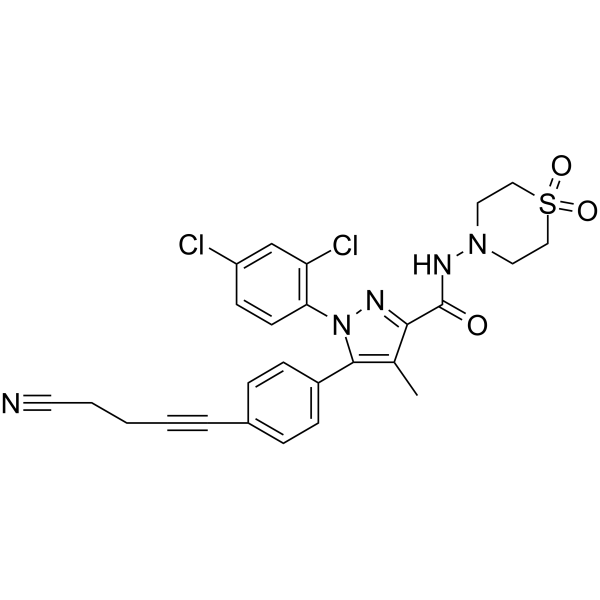
-
- HY-147151
-
|
|
Others
|
Others
|
|
AMCPy is a potent electron paramagnetic resonance (EPR) brain imaging agent, possessing excellent lipophilicity for blood−brain barrier (BBB) penetration .
|
-
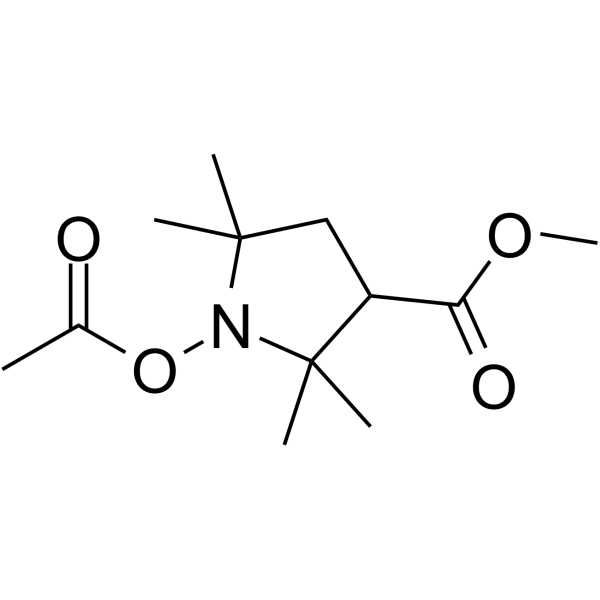
-
- HY-115727
-
-
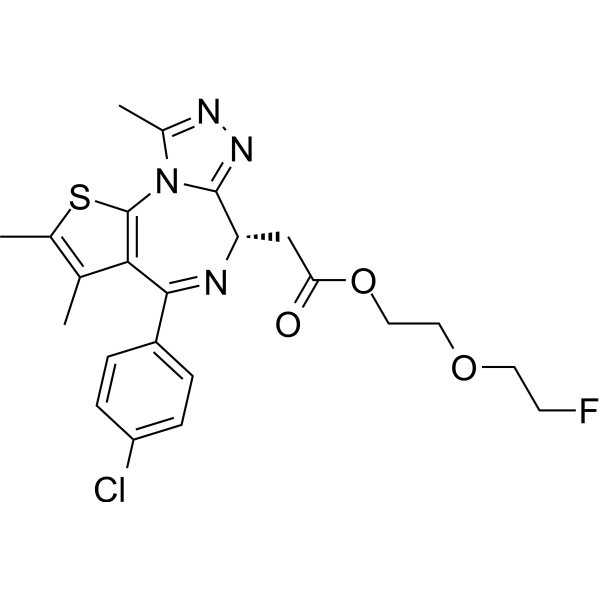
-
- HY-W105835
-
|
Trimagnesium dicitrate
|
Toll-like Receptor (TLR)
|
Neurological Disease
|
|
Magnesium citrate is a magnesium salt form that provides efficient penetration into brain and muscle tissue. Magnesium citrate increases pain threshold and reduces TLR4 concentration in the brain. Orally active .
|
-

-
- HY-156717
-
-

-
- HY-101349A
-
|
|
Dopamine Receptor
|
Neurological Disease
|
|
L 741742 hydrochloride is an orally active and selective antagonist of hD4 receptors. L 741742 hydrochloride has a good brain penetration. L 741742 hydrochloride can be used in study nervous system disorders, particularly schizophrenia .
|
-
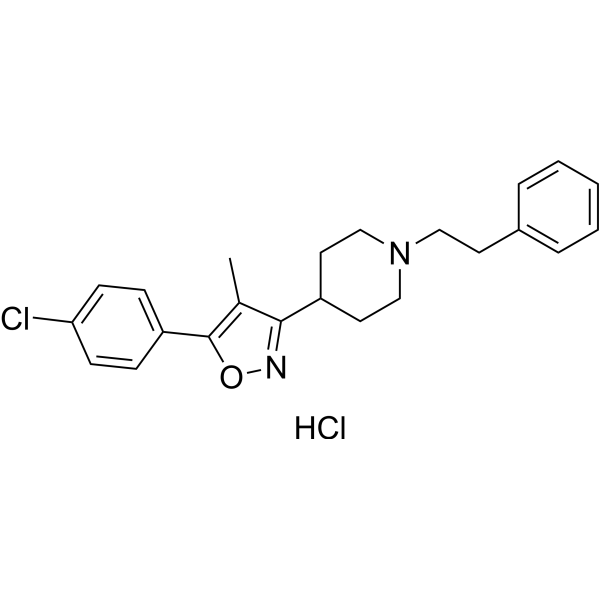
-
- HY-12599
-
-
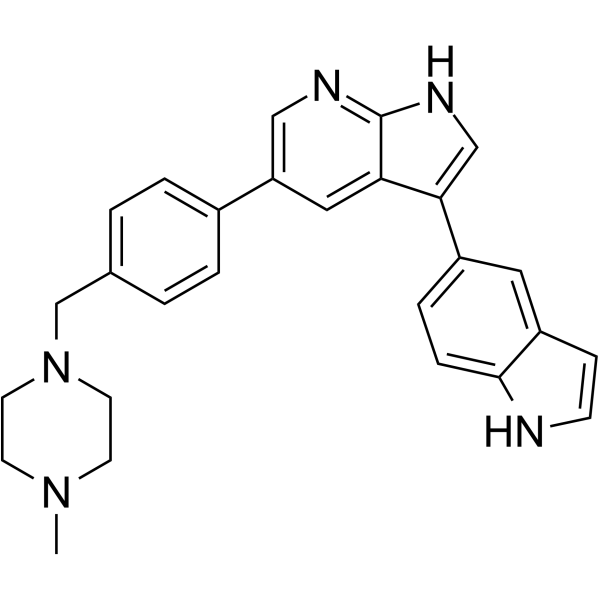
-
- HY-161380
-
|
|
Fungal
|
Infection
|
|
Antifungal agent 96 (Compound WZ-2) is an antifungal agent with good blood-brain barrier permeability and brain penetration. Antifungal agent 96 inhibits the growth of C. neoformans H99 and C. albicans 0304103 with MIC values of 0.016 and 32 μg/mL, respectively .
|
-

-
- HY-105860
-
|
BGG 492
|
iGluR
|
Neurological Disease
|
|
Selurampanel (BGG 492) is an orally active and competitive AMPA receptor antagonist with an IC50 of 190 nM. Selurampanel has reasonable blood-brain barrier penetration. Selurampanel can be used for epilepsy research .
|
-
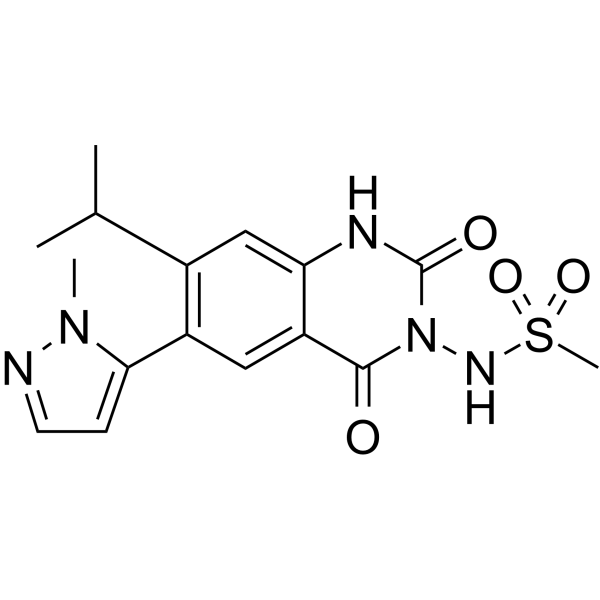
-
- HY-141866
-
|
|
Ceramidase
|
Neurological Disease
|
|
Acid Ceramidase-IN-1 is a potent and oral bioavailable acid ceramidase (AC, ASAH-1) inhibitor (hAC IC50=0.166 μM). Acid Ceramidase-IN-1 has excellent brain penetration in mice .
|
-
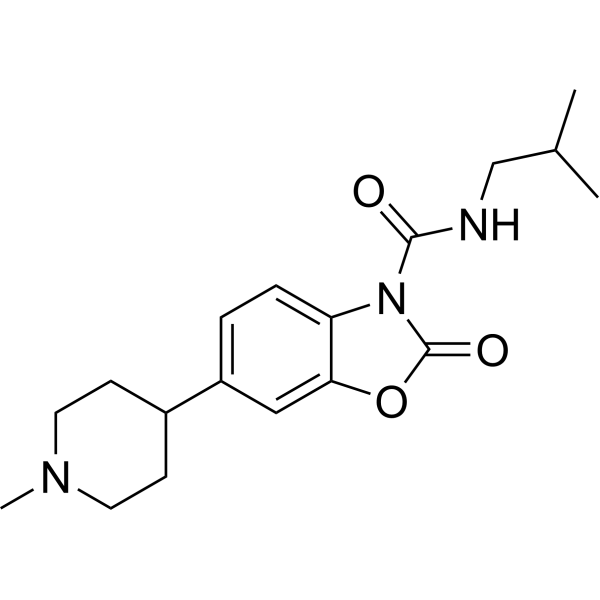
-
- HY-N12614
-
|
|
Phosphatase
|
Metabolic Disease
|
|
Diorcinol is a potent SHP1 inhibitor with an IC50 value of 0.96 μM. Diorcinol can be isolated from Aspergillus sydowii. Diorcinol has good blood-brain barrier penetration and can be used for diabetes research .
|
-

-
- HY-15112
-
|
|
Prolyl Endopeptidase (PREP)
|
|
|
JTP-4819 is a potent and specific inhibitor of prolyl endopeptidase (PREP) with IC50s of 0.83 nM (in rat brain supernatant) and 5.43 nM (in Flavobacterium meningosepticum). JTP-4819 has blood-brain penetration, also improves the retention time of amnesia rats induced by Scopolamine (HY-N2096) .
|
-
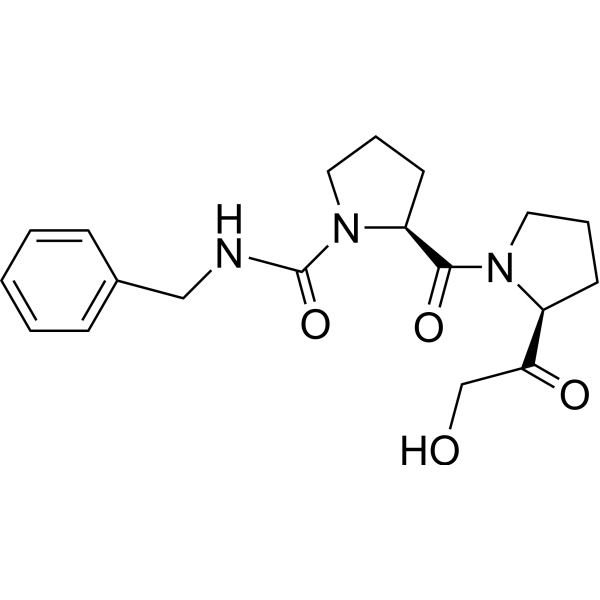
-
- HY-152632
-
|
|
Cholinesterase (ChE)
|
Neurological Disease
|
|
BuChE-IN-7 is a highly selective inhibitor of hBuChe and eqBuChE with IC50 values of 40 nM, 80 nM respectively. BuChE-IN-7 can promote cognitive with blood-brain penetration and improves situational and phobic memory, showing preference for new things .
|
-

-
- HY-100238
-
|
|
|
|
|
Antihistamine-1 is a H1-antihistamine (Ki=6.9 nM) with acceptable blood-brain barrier penetration and also an inhibitor of CYP2D6 and hERG channel with IC50s of 5.4 and 0.8 μM, respectively.
|
-
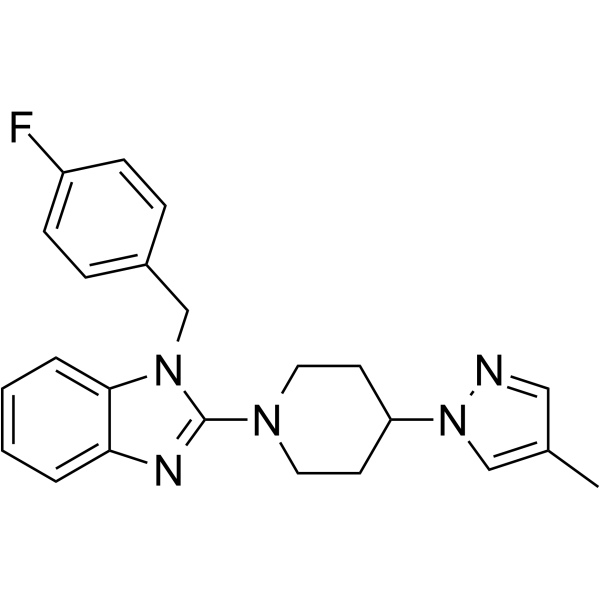
-
- HY-152171
-
|
|
Monoamine Transporter
|
Neurological Disease
|
|
GZ-11608 is a potent and selective vesicular monoamine transporter-2 (VMAT2) inhibitor with high affinity (Ki = 25 nM). GZ-11608 decreases methamphetamine-induced dopamine release from isolated synaptic vesicles from brain dopaminergic neurons. GZ-11608 exhibits rapid brain penetration and without neurotoxicity. GZ-11608 can be used for the research of methamphetamine use disorder .
|
-
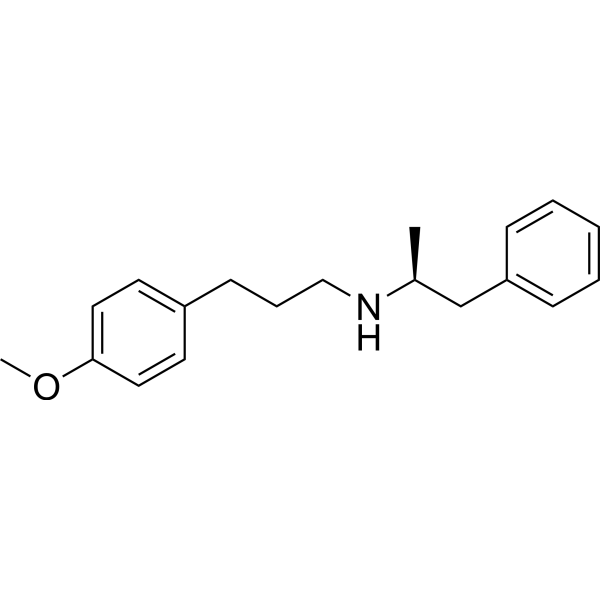
-
- HY-N4134
-
|
|
NO Synthase
|
Inflammation/Immunology
|
|
Ciwujianoside C3, an orally active and brain penetrated compound, is isolated the leaves of Acanthopanax henryi Harms. Ciwujianoside C3 has anti-inflammatory effect and can reinforces object recognition memory .
|
-
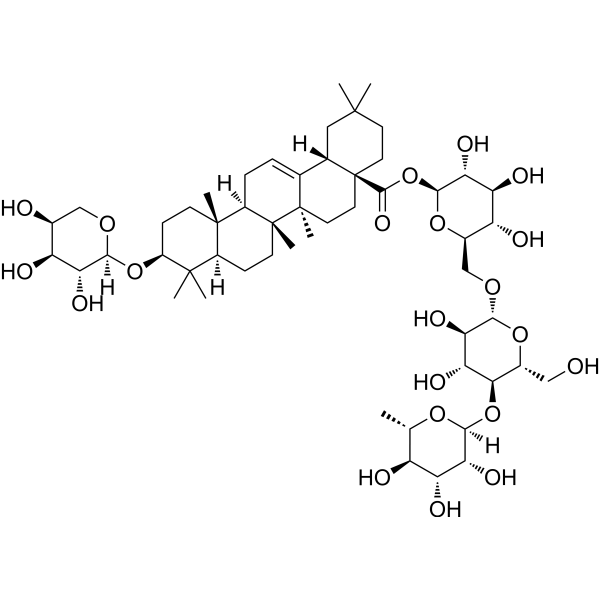
-
- HY-107666
-
-
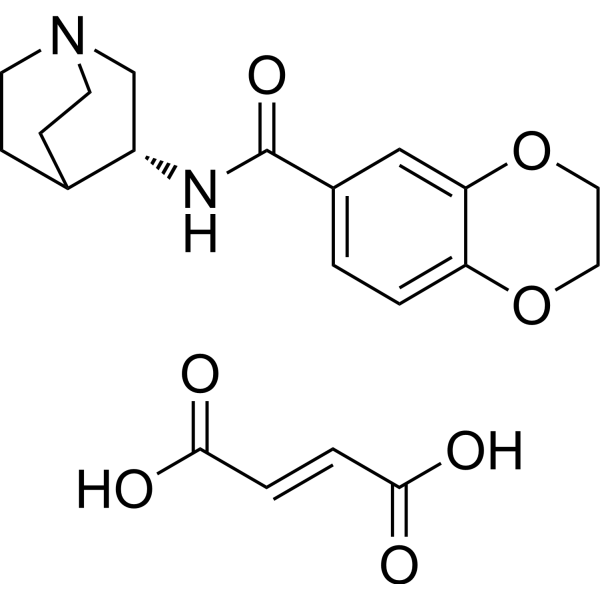
-
- HY-108625
-
SHA 68
1 Publications Verification
|
Neuropeptide Y Receptor
|
Neurological Disease
|
|
SHA 68 is a potent and selective non-peptide neuropeptide S receptor (NPSR) antagonist with IC50s of 22.0 and 23.8 nM for NPSR Asn 107 and NPSR Ile 107, respectively. SHA 68 has limited the blood-brain barrier (BBB) penetration and the activity in neuralgia .
|
-
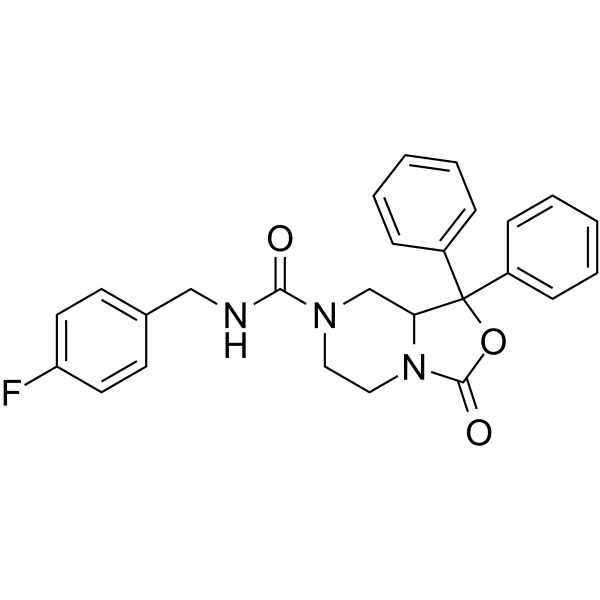
-
- HY-128865
-
|
|
Opioid Receptor
|
Neurological Disease
|
|
BPR1M97 is a dual-acting mu opioid receptor (MOP) and nociceptin-orphanin FQ peptide (NOP) receptor agonist with Ki values of 1.8 and 4.2 nM, respectively. BPR1M97 shows high potency and blood-brain barrier penetration, and produces potent antinociceptive effects .
|
-
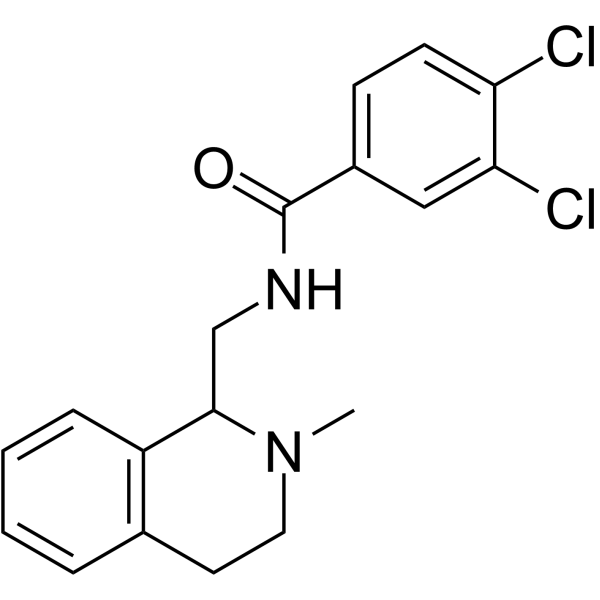
-
- HY-127106
-
|
|
Potassium Channel
|
Neurological Disease
|
|
VU0810464 is a potent and selective non-ureaG protein-gated inwardly-rectifying potassium channels (GIRK, Kir3) activator. VU0810464 displays nanomolar potency for neuronal (EC50=165 nM) and GIRK1/4 (EC50=720 nM) channels with improved brain penetration .
|
-
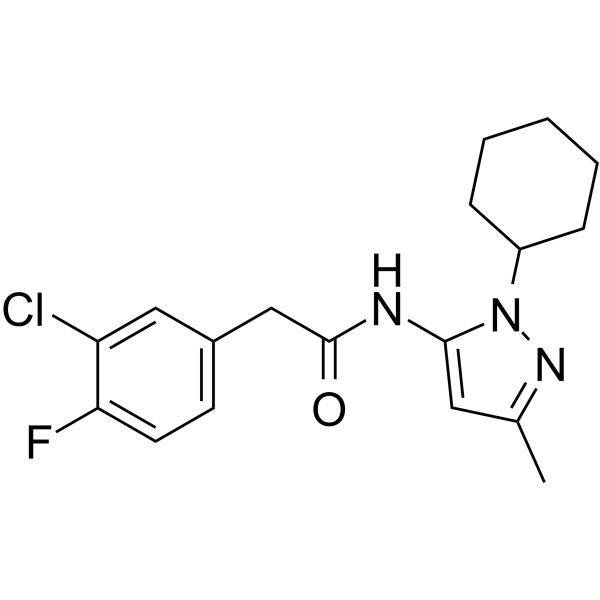
-
- HY-P10019
-
|
NLY01
|
GCGR
|
Neurological Disease
|
|
Pegsebrenatide (NLY01) is a long-acting GLP-1R agonist. Pegsebrenatide has an extended half-life and favorable blood-brain barrier penetration. Pegsebrenatide can block A1 astrocyte transformation, reducing dopaminergic cell death, and improving motor symptoms in mouse models of PD .
|
-

-
- HY-114320
-
|
TM-10
|
Cholinesterase (ChE)
|
Neurological Disease
|
|
BuChE-IN-TM-10 (TM-10) is a potent butyrylcholinesterase (BuChE) inhibitor, with an IC50 of 8.9 nM. BuChE inhibitor 1 inhibits and disaggregates self-induced Aβ aggregation, exhibiting potent antioxidant activity and good blood-brain barrier (BBB) penetration. Has potential to treat Alzheimer’s disease .
|
-
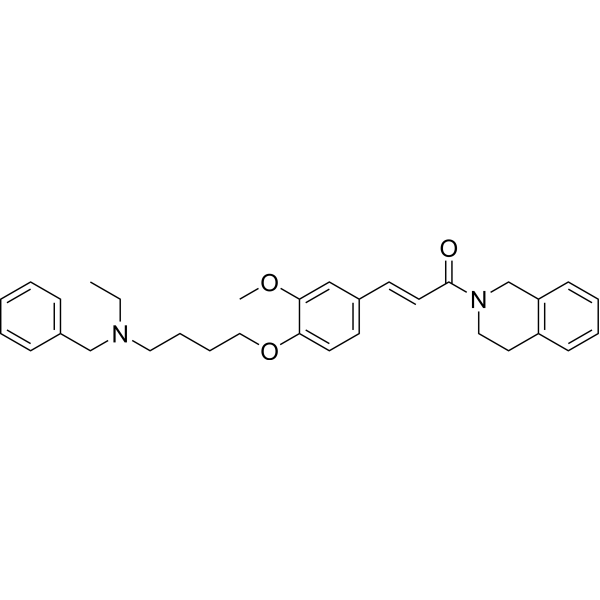
-
- HY-120574
-
|
|
ADC Cytotoxin
Topoisomerase
|
Cancer
|
|
TH1338 (compound 3b), an orally active camptothecin derivative and a potent chemotherapeutic agent for cancer, demonstrates excellent cytotoxic potency against human tumor cell lines in vitro. TH1338 (compound 3b) possesses significant brain penetration, favorable efflux pump properties, and hematological toxicity profile .
|
-
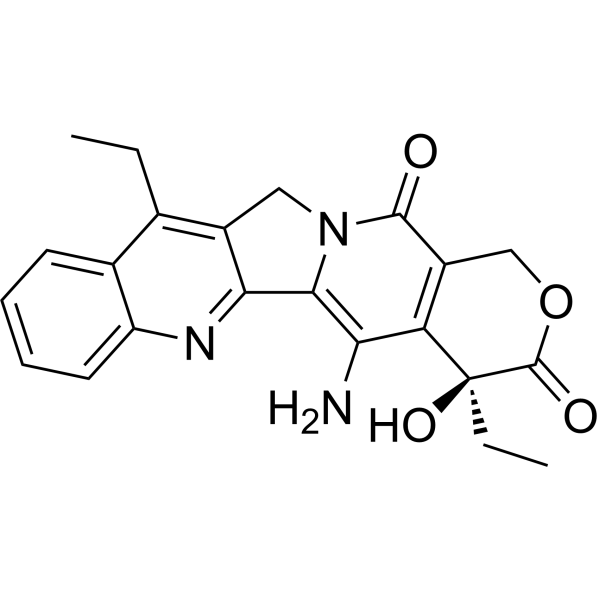
-
- HY-101834
-
|
|
Orexin Receptor (OX Receptor)
|
Others
|
|
ACT-462206 is an orally active and potent dual Orexin 1/Orexin 2 receptor antagonist with IC50s of 60 nM (Orexin 1) and 11 nM (Orexin 2), respectively. ACT-462206 exhibits brain penetration properties, and can be used for insomnia, stress/anxiety-related disorders and addiction research .
|
-
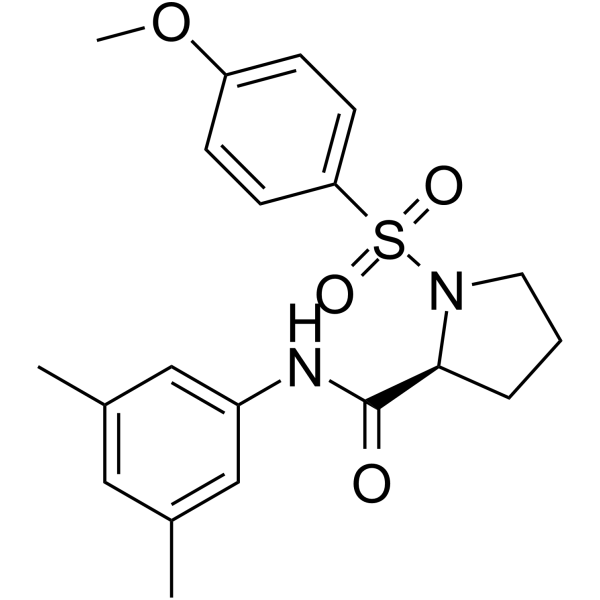
-
- HY-162351
-
|
|
Others
|
Metabolic Disease
|
|
EBP-IN-1 (compound 11) is an inhibitor of emopamil-binding protein (EBP), a sterol isomerase in the cholesterol biosynthetic pathway. EBP-IN-1 has a long half-life in rodents and has good metabolic turnover and brain penetration properties. EBP-IN-1 enhances oligodendrocyte formation in human cortical organoids .
|
-
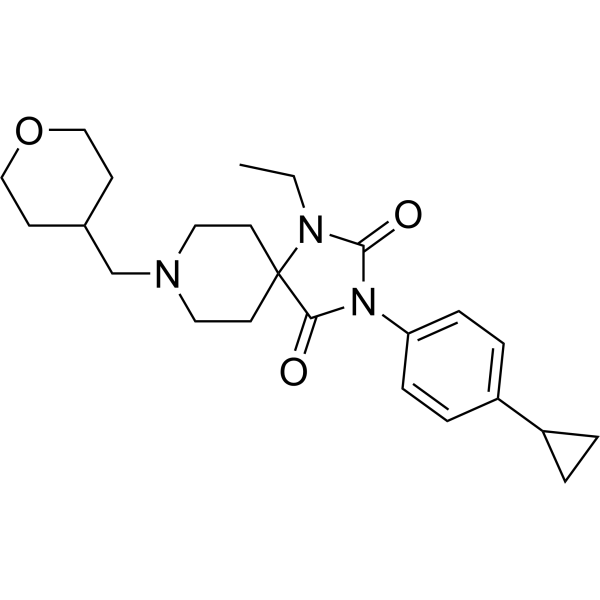
-
- HY-14325
-
|
|
Dopamine Receptor
|
Neurological Disease
|
|
L-745870 is a potent, selective, brain-penetrant and orally active dopamine D4 receptor antagonist with a Ki of 0.43 nM. L-745870 shows weaker affinity for D2 (Ki of 960 nM) and D3 (Ki of 2300 nM) receptors, and exhibits moderate affinity for 5-HT2 receptors, sigma sites and α-adrenoceptors .
|
-
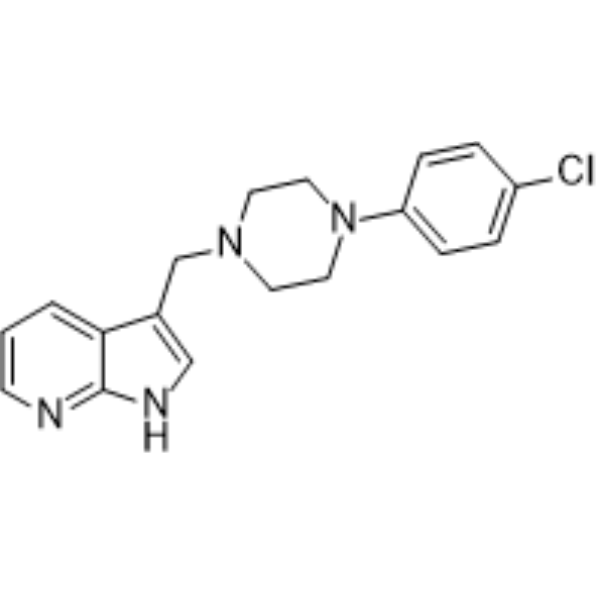
-
- HY-14325B
-
|
|
Dopamine Receptor
|
Neurological Disease
|
|
L-745870 hydrochloride is a potent, selective, brain-penetrant and orally active dopamine D4 receptor antagonist with a Ki of 0.43 nM. L-745870 hydrochloride shows weaker affinity for D2 (Ki of 960 nM) and D3 (Ki of 2300 nM) receptors, and exhibits moderate affinity for 5-HT2 receptors, sigma sites and α-adrenoceptors .
|
-
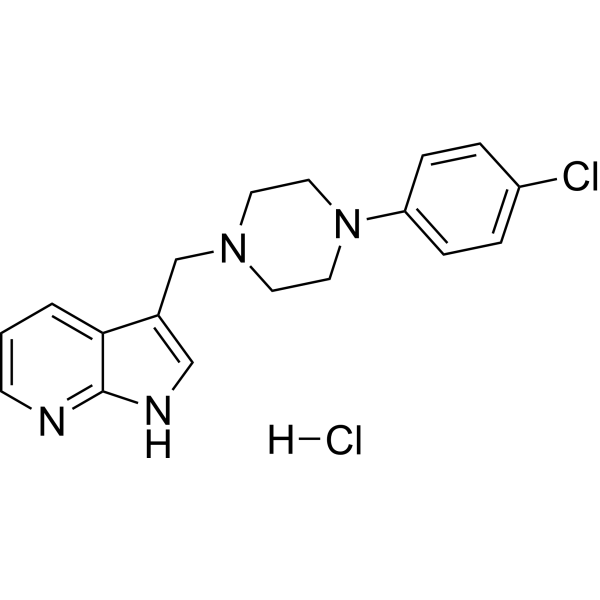
-
- HY-157998
-
|
|
mGluR
Src
|
Others
|
|
mG2N001 is a negative allosteric modulator (NAM) (IC50: 93 nM) of the metabotropic glutamate receptor mGluR2 and binds to mGluR2 as an antagonist (Ki: 63 nM). mG2N001 is microparticle- and plasma-stable, and its radioisotope [11C]mG2N001 can be used in PET imaging. [11C]mG2N001 has good brain heterogeneity and brain penetration, and can selectively accumulate in mGluR2-rich regions, producing high-contrast brain images .
|
-
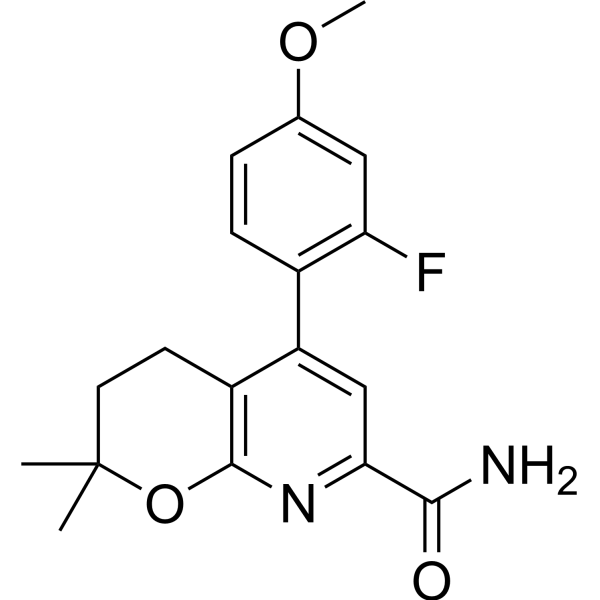
-
- HY-11045
-
|
|
Histamine Receptor
|
Neurological Disease
Inflammation/Immunology
Endocrinology
|
|
PF-03654746 is a potent and selective histamine H3 receptor antagonist with high brain penetration.
PF-03654746 reduces allergen-induced nasal symptoms, might be a novel therapeutic strategy to further explore allergic rhinitis .
PF-03654746 improves cognitive efficacy and disease-modifying effects in Alzheimer's disease (AD) .
|
-
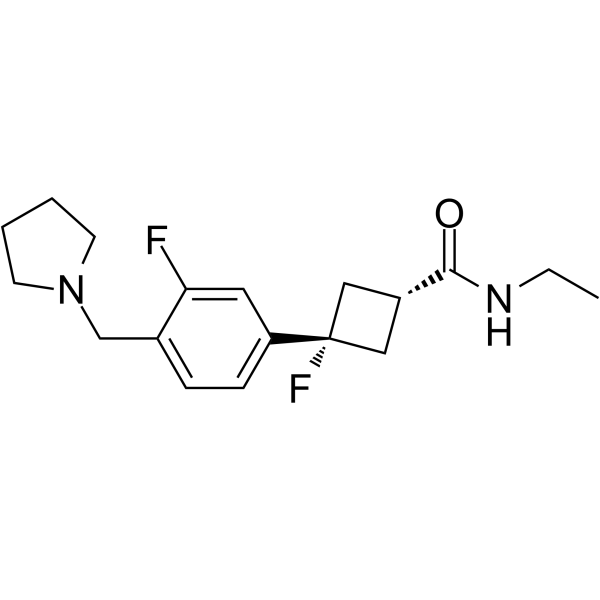
-
- HY-145906
-
|
|
Dopamine Receptor
|
Neurological Disease
|
|
D4R antagonist-2 is a potent and selective D4R antagonist with an IC50 of 6.52 µM. D4R antagonist-2 displays very favorable in vitro PK parameters and has good brain penetration. D4R antagonist-2 has the potential for the research of Parkinson’s disease .
|
-
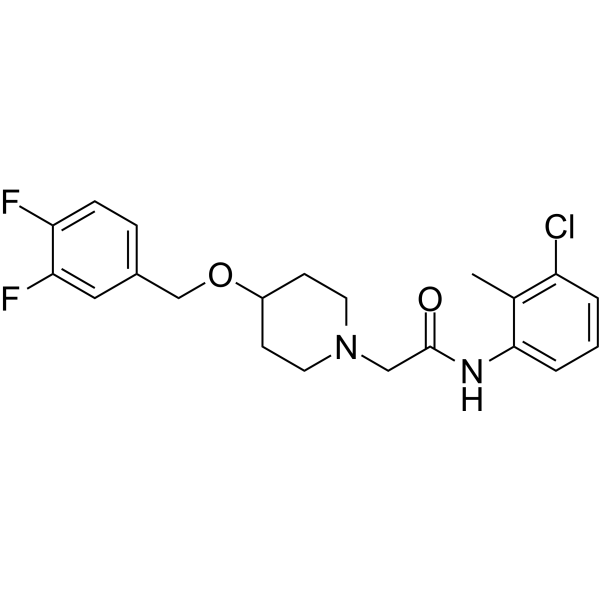
-
- HY-114331
-
|
|
MAP3K
|
Neurological Disease
|
|
DLK-IN-1 is a selective, orally active inhibitor of dual leucine zipper kinase (DLK, MAP3K12), with a Ki of 3 nM. DLK-IN-1 retains excellent CNS penetration and is well tolerated following multiple days of dosing at concentrations that exceed those required for DLK inhibition in the brain. DLK-IN-1 has activity in a model of Alzheimer’s Disease.
|
-
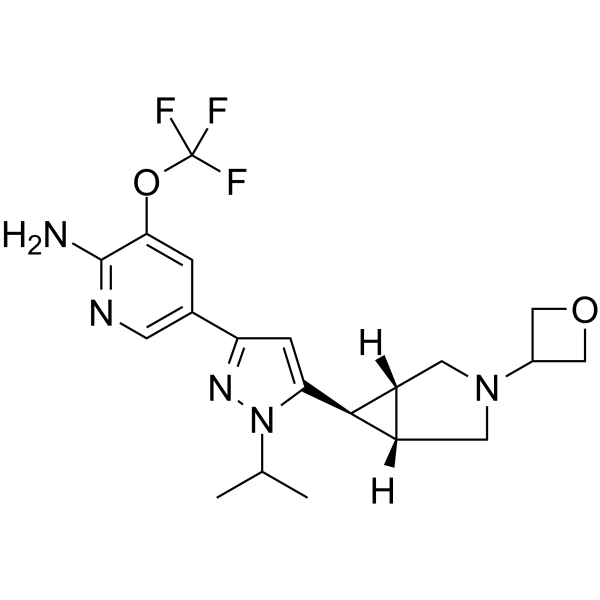
-
- HY-143413
-
|
|
Amyloid-β
|
Neurological Disease
Inflammation/Immunology
|
|
BuChE-IN-2 is an excellent butyrylcholinesterase (BuChE) inhibitor (IC50s of 1.28 μM and 0.67 μM for BuChE and NO). BuChE-IN-2 can inhibit the aggregation of Aβ, ROS formation and chelate Cu 2+, exhibiting proper blood-brain barrier (BBB) penetration. BuChE-IN-2 has potential to research Alzheimer’s disease .
|
-

-
- HY-N4190
-
|
1,6-O,O-Diacetylbritannilactone; Di-O-acetylbritannilactone
|
NO Synthase
|
Neurological Disease
Inflammation/Immunology
|
|
Britannilactone diacetate (1,6-O,O-Diacetylbritannilactone; Compound 2) exhibits potential NO inhibition effect. Britannilactone diacetate exhibits activity against NO production induced by LPS in BV-2 microglial cells with the EC50 value of 6.3 μM. Britannilactone diacetate exhibits a favorable blood-brain barriers (BBB) penetration and absorption, distribution, metabolism, excretion, and toxicity (ADMET) property .
|
-
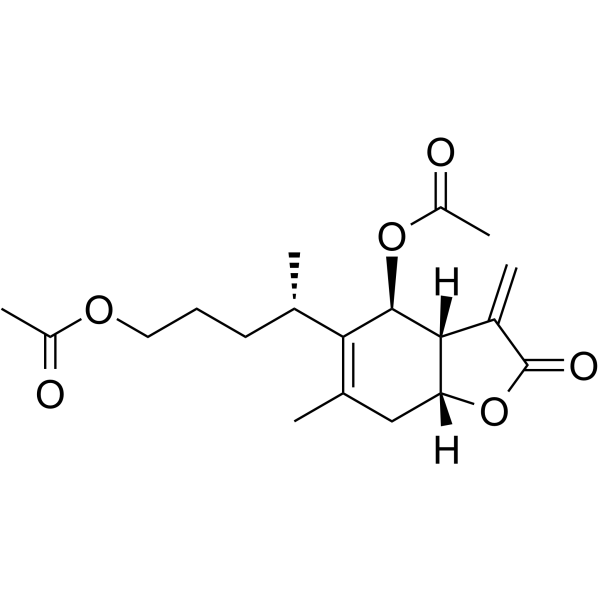
-
- HY-135478
-
|
NCC1048
|
Calcium Channel
Sodium Channel
|
Neurological Disease
|
|
LY393615 (NCC1048) is a novel neuronal Ca 2+ (calcium channel) and Na + channel (sodium channel) blocker with IC50s of 1.9 μΜ and 5.2 μΜ for α1A and α1B calcium channel subunits. LY393615 has good brain penetration and neuroprotective effects in models of in cerebral ischemia that can be used for neurological disease research .
|
-

-
- HY-115340
-
|
|
Biochemical Assay Reagents
|
Others
|
|
Decanoic acid sodium, also known as Decanoic acid sodium, is a salt of the fatty acid capric acid. It is easily soluble in water and has a slightly soapy smell. Decanoic acid sodium acts as a penetration enhancer, which means it increases the absorption and bioavailability of drugs across biological membranes, including the intestinal epithelium and the blood-brain barrier. This property makes it useful in pharmaceutical formulations to improve drug delivery and effectiveness. Furthermore, Decanoic acid sodium has potential applications in food preservatives and cosmetics due to its antibacterial properties.
|
-

-
- HY-101855
-
|
Anle138b
|
Amyloid-β
|
Neurological Disease
|
|
Emrusolmin (Anle138b), an oligomeric aggregation inhibitor, blocks the formation of pathological aggregates of prion protein (PrPSc) and of α-synuclein (α-syn). Emrusolmin strongly inhibits oligomer accumulation, neuronal degeneration, and disease progression in vivo. Emrusolmin has low toxicity and an excellent oral bioavailability and blood-brain-barrier penetration. Emrusolmin blocks Aβ channels and rescues disease phenotypes in a mouse model for amyloid pathology .
|
-

- HY-155992
-
|
|
Sigma Receptor
|
Neurological Disease
|
|
WLB-89462 (Compound 20c) is a selective σ2 receptor ligand (Ki: 13 nM). WLB-89462 has neuroprotective activity. WLB-89462 improves short-term memory impairment induced by Aβ peptide in rats. WLB-89462 has good ADMET profile (good solubility, no CYP inhibition, good metabolic stability, high permeability, brain penetration, and high oral exposure in rodents) .
|
-

- HY-B0250
-
Lamivudine
Maximum Cited Publications
6 Publications Verification
BCH-189
|
HIV
Reverse Transcriptase
HBV
|
Infection
Cancer
|
|
Lamivudine (BCH-189) is an orally active nucleoside reverse transcriptase inhibitor (NRTI). Lamivudine can inhibit HIV reverse transcriptase 1/2 and also the reverse transcriptase of hepatitis B virus. Lamivudine salicylate can penetrate the CNS .
|
-

- HY-150503
-
|
|
HDAC
|
Neurological Disease
|
|
KH-259 (compound 1) is a potent, selective and CNS-penetrant HDAC6 inhibitor, with an IC50 of 0.26 μM. KH-259 has antidepressant effects in mice through the inhibition of HDAC6 in the brain. KH-259 can be used for neurodegenerative diseases research .
|
-
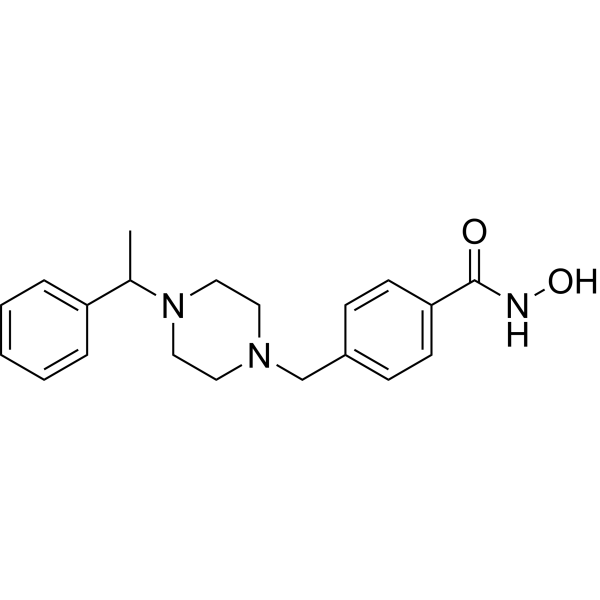
- HY-B0250S1
-
|
BCH-189-13C,15N2,d2
|
Isotope-Labeled Compounds
HBV
Reverse Transcriptase
HIV
|
Infection
|
|
Lamivudine-13C,15N2,d2 (BCH-189-13C,15N2,d2) is a 13C, 15N, and deuterium labeled Lamivudine (HY-B0250). Lamivudine is an orally active and blood-brain barrier permeable nucleoside reverse transcriptase inhibitor (NRTI). Lamivudine inhibits HIV reverse transcriptase 1 and 2 and hepatitis B virus (HBV) reverse transcriptase .
|
-

- HY-14205
-
|
|
Monoamine Oxidase
|
Neurological Disease
|
|
NW-1772 (methanesulfonate) (22b) is a potent and selective monoamine oxidase (MAO) B inhibitor. NW-1772 (methanesulfonate) is the equivalent of HY-111156 NW-1772. NW-1772 has some advantages, such as rapid blood-brain barrier penetration, short-acting and reversible inhibitory activity, slight inhibition of selected cytochrome P450s, and low in vitro toxicity. NW-1772 can be used for the research of neurodegenerative diseases .
|
-

- HY-16712
-
|
|
TGF-β Receptor
|
Cancer
|
|
LDN-214117 is an orally active ALK2 inhibitor with well-tolerated and good brain penetration. LDN-214117 has a high selectivity and low cytotoxicity for ALK2 with an IC50 value of 24 nM. LDN-214117 also is a specific bone morphogenetic proteins (BMPs) signaling inhibitor and has relatively selective inhibition for BMP6 with an IC50 value of 100 nM. LDN-214117 can be used for the research of fibrodysplasia ossificans progressiva (FOP), diffuse intrinsic pontine glioma (DIPG) [2]
|
-

- HY-115925
-
|
|
SHP2
Phosphatase
|
Cancer
|
|
SHP2-IN-9 is a specific SHP2 inhibitor (IC50 =1.174 μM) with enhanced blood–brain barrier penetration. SHP2-IN-9 shows 85-fold more selective for SHP2 than SHP1. SHP2-IN-9 inhibits SHP2-mediated cell signal transduction and cancer cell proliferation, and inhibits the growth of cervix cancer tumors and glioblastoma growth in vivo .
|
-

- HY-12624
-
|
ON123300
|
CDK
AMPK
PDGFR
|
Cancer
|
|
Narazaciclib (ON123300), a strong and brain-penetrant multi-kinase inhibitor, inhibits CDK4 (IC50=3.9 nM), Ark5 (IC50=5 nM), PDGFRβ (IC50=26 nM), FGFR1 (IC50=26 nM), RET (IC50=9.2 nM), and FYN (IC50=11 nM). Single agent Narazaciclib causes a dose-dependent suppression of phosphorylation of Akt as well as activation of Erk in brain tumors . Narazaciclib inhibits CDK6 with an IC50 of 9.82 nM .
|
-
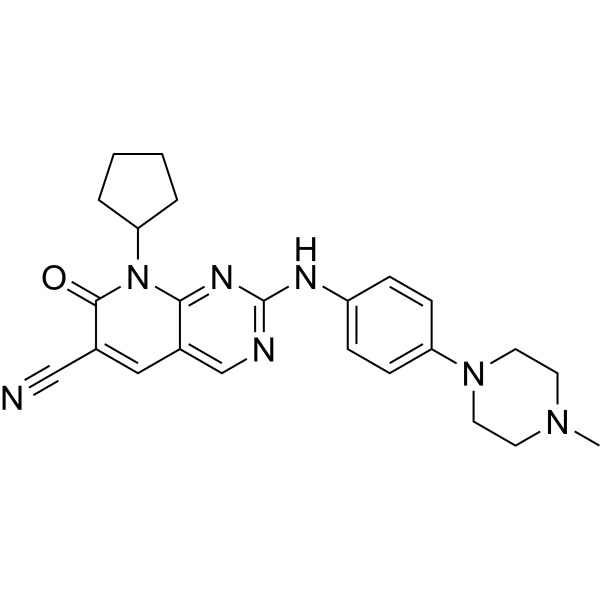
- HY-133551
-
|
|
RET
|
Cancer
|
|
WF-47-JS03 is a potent and selective RET kinase inhibitor with IC50s of 1.7 nM and 5.3 nM for KIF5B-RET transfected Ba/F3 cells and CCDC6-RET transfected LC-2/ad lung cancer cells, respectively. WF-47-JS03 demonstrates >500-fold selectivity against kinase insert domain receptor (KDR). Effective brain penetration .
|
-

| Cat. No. |
Product Name |
Type |
-
- HY-115340
-
|
|
Biochemical Assay Reagents
|
|
Decanoic acid sodium, also known as Decanoic acid sodium, is a salt of the fatty acid capric acid. It is easily soluble in water and has a slightly soapy smell. Decanoic acid sodium acts as a penetration enhancer, which means it increases the absorption and bioavailability of drugs across biological membranes, including the intestinal epithelium and the blood-brain barrier. This property makes it useful in pharmaceutical formulations to improve drug delivery and effectiveness. Furthermore, Decanoic acid sodium has potential applications in food preservatives and cosmetics due to its antibacterial properties.
|
| Cat. No. |
Product Name |
Target |
Research Area |
-
- HY-P10019
-
|
NLY01
|
GCGR
|
Neurological Disease
|
|
Pegsebrenatide (NLY01) is a long-acting GLP-1R agonist. Pegsebrenatide has an extended half-life and favorable blood-brain barrier penetration. Pegsebrenatide can block A1 astrocyte transformation, reducing dopaminergic cell death, and improving motor symptoms in mouse models of PD .
|
| Cat. No. |
Product Name |
Target |
Research Area |
-
- HY-P9967
-
|
BIIB037
|
Amyloid-β
|
Neurological Disease
|
|
Aducanumab (BIIB037) is a human monoclonal antibody that selectively targets aggregated amyloid-beta (Aβ). Aducanumab shows brain penetration, and can be used for Alzheimer's disease (AD) research .
|
| Cat. No. |
Product Name |
Category |
Target |
Chemical Structure |
| Cat. No. |
Product Name |
Chemical Structure |
-
- HY-B0250S1
-
|
|
|
Lamivudine-13C,15N2,d2 (BCH-189-13C,15N2,d2) is a 13C, 15N, and deuterium labeled Lamivudine (HY-B0250). Lamivudine is an orally active and blood-brain barrier permeable nucleoside reverse transcriptase inhibitor (NRTI). Lamivudine inhibits HIV reverse transcriptase 1 and 2 and hepatitis B virus (HBV) reverse transcriptase .
|
-

| Cat. No. |
Product Name |
|
Classification |
-
- HY-139300A
-
|
HMPL-813 succinate
|
|
Alkynes
|
|
Epitinib succinate is an orally active and selective epidermal growth factor receptor tyrosine kinase inhibitor (EGFR-TKI) designed for optimal brain penetration. Epitinib succinate can be used for the research of cancer . Epitinib (succinate) is a click chemistry reagent, it contains an Alkyne group and can undergo copper-catalyzed azide-alkyne cycloaddition (CuAAc) with molecules containing Azide groups.
|
-
- HY-139300
-
|
HMPL-813
|
|
Alkynes
|
|
Epitinib is an orally active and selective epidermal growth factor receptor tyrosine kinase inhibitor (EGFR-TKI) designed for optimal brain penetration. Epitinib can be used for the research of cancer . Epitinib is a click chemistry reagent, it contains an Alkyne group and can undergo copper-catalyzed azide-alkyne cycloaddition (CuAAc) with molecules containing Azide groups.
|
Your information is safe with us. * Required Fields.
Inquiry Information
- Product Name:
- Cat. No.:
- Quantity:
- MCE Japan Authorized Agent:



































































